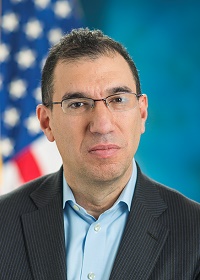Prescription Drug Spending Growth Skyrocketed 13% in 2014
Surveys are showing that as many as 25 percent of Americans are unable to afford the costs of their prescription drugs, which means that accessibility to medication is already being threatened.

- In 2014, the rise of prescription drug spending hit 13 percent while overall healthcare spending growth increased by 5 percent. This steep rise is causing concern among both federal agencies like the Centers for Medicare & Medicaid Services (CMS) as well as commercial insurers and medical care providers.

At a pharmaceutical forum held by the Department of Health and Human Services (HHS), CMS Acting Administrator Andy Slavitt discussed the prescription drug accessibility concerns behind the rise in spending.
“As costs go up, so does everyone’s anxiety about their continued access to their prescription medicine. And because we all plan to use the Medicare program one day, it’s not just today’s beneficiaries, but all of us who have a stake in the long term accessibility of new therapies,” CMS Acting Administrator Andy Slavitt said in a public statement. “As we encourage the development of new generations of highly targeted, personalized therapies, we need strategies for ensuring access to these innovations.”
Solely in the Medicare and Medicaid programs, CMS spent a total of $140 billion on prescription drugs last year. Even more funds went into the Children’s Health Insurance Program and additional spending took place within the health insurance exchanges as well as among commercial insurers.
Due to premiums, co-insurance, and deductibles, the soaring costs of prescription drugs are impacting employers, families, the elderly, low-income individuals, and the disabled, Slavitt went on to explain.
Surveys are showing that as many as 25 percent of Americans are unable to afford the costs of their prescription drugs, which means that accessibility to medication is already being threatened. In fact, Medicaid programs in certain states may be unable to afford some necessary therapies for patients at risk of deteriorating illness or even mortality.
A report from the Health Care Cost Institute detailed how brand prescription drug spending rose more steeply in 2014 than in most recent years. It seems that Hepatitis C antiviral drugs were a major cause of this, as they composed $29 out of a total $45 per capita rise. The main Hepatitis C drugs that led to the increase in costs were Olysio, Sovaldi, and Harvoni.
The rise in prescription drug spending is clearly a major issue that needs to be better managed across the entire healthcare industry. In particular, the costs of specialty drugs compose a total of a third of all financial resources while taking up a tiny fraction of available medicines, Slavitt mentioned at the forum.
Along with the high costs of specialty medication, the recent rise in generic drug costs has also proven to be an obstacle for accessibility. In order to reduce the soaring prescription drug spending rates, the CMS Acting Administrator suggests to bring the value-based care payment models toward the pharmaceutical industry.
 “How do we create rewards for therapies that reduce disease, keep people in their homes and out of hospitals or other institutions and control chronic diseases while improving outcomes?” Slavitt asks.
“How do we create rewards for therapies that reduce disease, keep people in their homes and out of hospitals or other institutions and control chronic diseases while improving outcomes?” Slavitt asks.
“What’s the best way to pay for targeted therapies when they work for some patients, but not others? How do we think in terms of episodes of effective treatment, rather than just the cost of a pill? This dialogue on value we are having today presents an important opportunity to understand how to invest in innovation and improve access.”
With list prices, wholesale prices, rebates, and hospital markups, it is clear that cost and information transparency needs to improve in order to truly understand the data and how to overcome the challenges of rising prescription drug spending.
Slavitt is calling on the pharmaceutical industry to help improve cost transparency and educate the public on the costs surrounding clinical trials, medication discovery, and drug manufacturing.
Additionally, it is necessary to better understand if there are any legislative challenges standing in the way of improving affordability of prescription drugs and accessibility to medication, as this could better align incentives throughout the pharmaceutical field to decrease the costs of medicine.
Gaining public input on strategies that could reduce prescription drug spending is a key aspect of cutting healthcare costs across the board. If there are any methods for HHS and CMS to develop new payment models and incentives for pharmaceutical manufacturers, the federal agencies want stakeholders to provide their feedback.
 In an interview with Dr. John R. Patrick, author of Health Attitude: Unraveling and Solving the Complexities of Healthcare, it was unveiled that Congress and lobbyists may be playing a role in keeping the costs of prescription drugs excessively high.
In an interview with Dr. John R. Patrick, author of Health Attitude: Unraveling and Solving the Complexities of Healthcare, it was unveiled that Congress and lobbyists may be playing a role in keeping the costs of prescription drugs excessively high.
For example, 12 years ago, Congress included language in its legislation that prohibits Medicare programs from negotiating drug prices with pharmaceuticals. This gives a greater advantage to commercial insurers and essentially leaves the federal and state programs from containing their own medication costs.
“The culprit in this area is Congress. The pharmaceutical lobby convinces Congress to do things that are not in the best interest of the American people but in the best interest of the pharmaceutical industry. For example, in Medicare Part D, the prescription drug plan put in place in 2003, Congress inserted a provision into the legislation preventing Medicare from negotiating the price for the drugs they pay,” Dr. Patrick stated. “It’s outrageous. The American people should be outraged and demand an explanation from Congress.”
“It’s a major contributor to the high cost of drugs. There’s no effective competition and they have the free hand to set prices wherever they want. Medicare pays it. Other countries do negotiate over the price. They pay a lot less than we do for exactly the same drugs.”
“For example, the price for one common pill in the US is $5.20 and it’s a $1.30 in Canada. This is the same pill made by the same company. This is because Congress doesn’t allow Medicare to negotiate and regulators do not allow Americans to buy drugs from Canada.”
The pharmaceutical industry will need greater cost transparency, a focus on value-based purchasing strategies, and more incentive-based reimbursement models in order for prescription drug spending to be contained.
